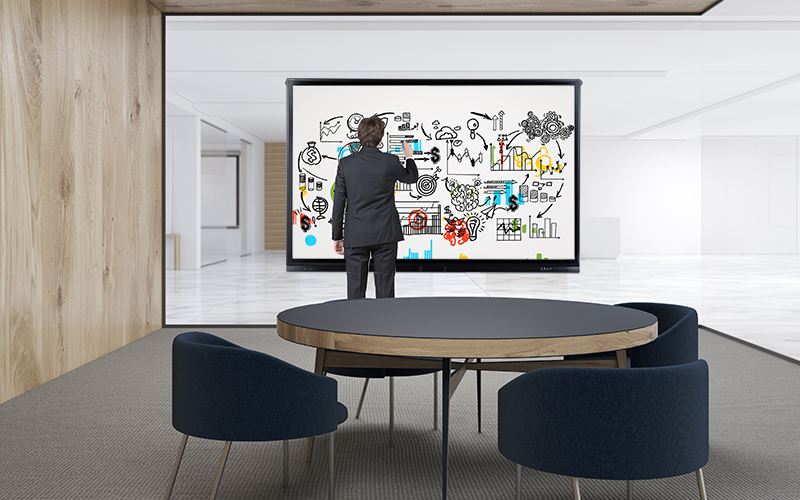
“Let’s meet in the Huddle room”.
It’s a phrase that we’re starting to hear far more frequently in the modern workplace. Many businesses struggling with square footage have had adhoc ‘huddle’ spaces for years. Impromptu meetings taking place in common areas where a handful of colleagues can get together to share, plan and brainstorm.
In today’s multi-use, open-plan working environments, there has been a significant shift away from large, space-zapping conference rooms with smaller huddle rooms and hub hangouts now recognised as formalised meeting places.
There are a number of key factors driving the trend towards these compact, flexible spaces. Corporate culture and the changing workforce have had a major impact on traditional office layouts. The rise in mobile and remote employees has paved the way for fluid work spaces that can still accommodate the nine to fivers while providing hot desk-type areas for the flexi-workers who come and go.
The way employees work is one of the biggest drivers behind the growing popularity of huddle rooms. In many industries, collaboration has become a critical part of successful working processes. Employees need spaces where they can collaborate easily. Although the interpretation of huddle rooms can be quite broad, essentially these spaces are small meeting rooms intended for collaboration - from informal conversations and creative brainstorming to sharing presentations and collating information.
Cost is also a massive issue. Maintaining an expansive building and IT infrastructure as businesses manage ever-tighter budgets, doesn’t lend itself to having large dedicated boardrooms lying dormant while half of the workforce is out ‘on the road’. It makes financial sense to have flexible environments where areas can be multi-purpose and pockets of collaboration can happen in range of different rooms and spaces.
The flexible working trend continues
There is, of course, one fundamental element that underlies this growing trend and that is digital technology. Without the huge technological shift that has brought the opportunities for cost-effective, flexible working – we would still be stuck behind our desks, travelling solo and working in silos. It’s ironic in a way that technology has made many workforces more dispersed, yet, it thanks to technology that these workers can stay in touch and work more collaboratively than ever before. It is technology that has also been the main enabler of the huddle room, particularly since the emergence of the latest conferencing, collaboration and AV/ IT equipment.
It wasn’t that long ago that conventional corporate meeting rooms were home to several thousands of pounds worth of static, integrated audio-visual tech. Investments in AV were designed to address traditional, meeting requirements and once installed it stayed firmly in place so workers would have to book that specific meeting room to use it. While there still may be a need to hold structured boardroom-style meetings, the latest collaboration solutions means that companies can now turn any space into a meeting space.
Enter the era of huddle rooms and hub hangouts that are a smarter way of making the most of every area in a fluid office layout. What’s key is the choice technology. It has to be intuitive, easy to install and highly responsive to foster the collaborative working needs of employees. Whether it’s the latest interactive display solutions integrated with the company’s unified communications, or installing the appropriately named ‘huddle boards’.
Originally, huddle boards were standard whiteboards, developed to visualise the progress of improvement projects in sectors such as healthcare. Teams would gather at specified intervals to visualise their priorities for a particular stage in a project and help focus on potential areas of improvement. This concept is being transferred across sectors into the modern workplace, with interactive display solutions that provide all of the visualisation and collaboration benefits and can transform any office space into a huddle room. The latest huddle boards or interactive display boards will facilitate group collaboration and communication and integrate with other existing devices for remote workers to create the most productive huddle space.
Conclusion
Modern workforces and workplaces are evolving and fluidity and flexibility are vital in today’s office layouts. It’s not the infrastructure of an office that encourages collaborative, productive meetings – it’s the technology that creates the right environment to foster the right behaviour. Getting together in the huddle room has never been easier.
Keep up to date with all the latest from Avocor and partners and get information on upcoming events and exciting product news.
Speak to one of our product specialists and find the perfect solution for you.